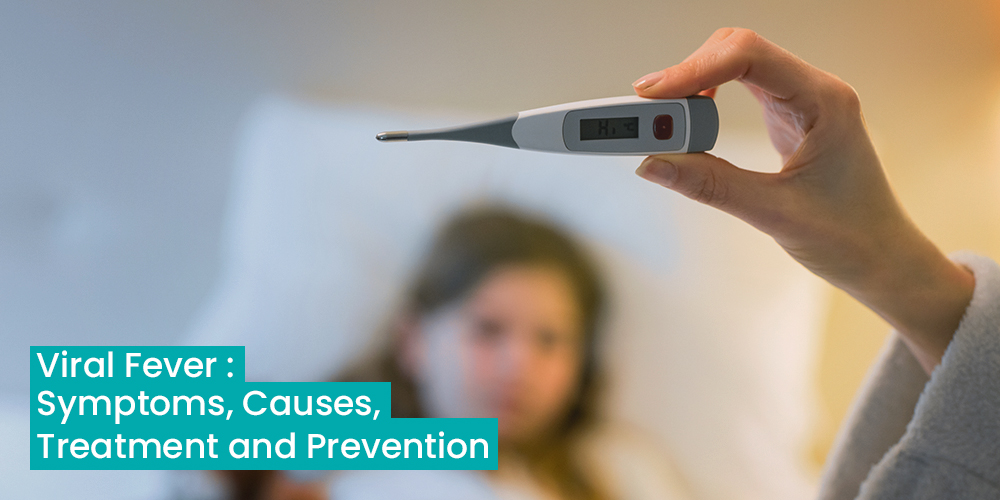Viral fever usually occurs with seasonal changes and is caused by a variety of viruses. These viruses affect people of all ages and are easily communicable from one person to another. Most viral fevers are characterized by high temperature, runny nose, headache, burning eyes, body aches, nausea, and vomiting.
Symptoms of Viral Fever
The temperature of viral fevers can range from 99°F to over 103°F (39°C), depending on the specific virus causing the infection. The symptoms vary from person to person depending on various factors like age, gender, lifestyle choices, and as such. Some of the major symptoms include,
- High Fever
- Sweating
- Sore Throat
- Decreased Appetite
- Dehydration
- Joint and Muscle Discomfort
- Chills
- Fatigue
- Nausea
- Nasal Congestion
- Diarrhoea
The symptoms in children are the same as that of adults and they typically subside within a few days.
What Causes Viral Fever?
Viral illnesses can occur from various sources, including cold and flu viruses. Distinguishing between viral and bacterial infections can be challenging, especially when a bacterial illness follows a viral one. This complexity makes it difficult to determine the appropriate use of antibiotics.
Viral fevers occur when the body’s defence mechanism produces pyrogens in response to viral antigens. The causes of viral fevers can vary depending on the specific type of viral fever. However, here are some of the most common causes:
- Contact with an infected individual who may not display symptoms but carries the virus.
- Inhaling airborne droplets containing the virus from an infected person.
- Insect bites that cause viral fevers such as dengue fever, yellow fever, Zika, and Chikungunya.
- Sharing food or drinks with the infected person.
- Sharing drug paraphernalia or engaging in blood exchange with an infected person.
- Contact with contaminated surfaces or areas that harbour viruses.
Treatment of Viral Fevers
The treatment for a viral fever depends on the specific virus involved and the severity of the symptoms. In cases of low-grade viral fever, doctors often recommend medications such as paracetamol or ibuprofen. Additionally, warm baths and electrolyte drinks can help alleviate muscle aches, fatigue, and diarrhoea.
For higher-grade fevers, doctors may advise a higher dose of paracetamol to be taken every 4 to 6 hours. It is important not to discontinue medications without consulting a doctor. In critical cases, intravenous administration of paracetamol may be used to reduce fever and bring it closer to normal levels.
To prevent secondary bacterial infections, doctors may prescribe antibiotics, which must be taken as prescribed in terms of dosage, frequency, and duration.
Prevention from Viral Fevers
Viral fevers can be prevented by adopting the following measures.
- Good hygiene like handwashing, sanitizing, and disinfecting spaces and surfaces.
- Avoidance of sharing foods, drinks, and personal belongings with others, especially during outbreaks.
- Minimization of contact with infected individuals.
- Staying vaccinated and taking precautions against mosquito-borne infections or diseases.
- Maintaining an immune body with nutritious food and a healthy diet.
At the outset, most viral infections will fade away with timely diagnosis and other supportive measures. Ensure to get ample rest, maintain a nutritious diet, and adhere to the recommendations provided by your doctor.

